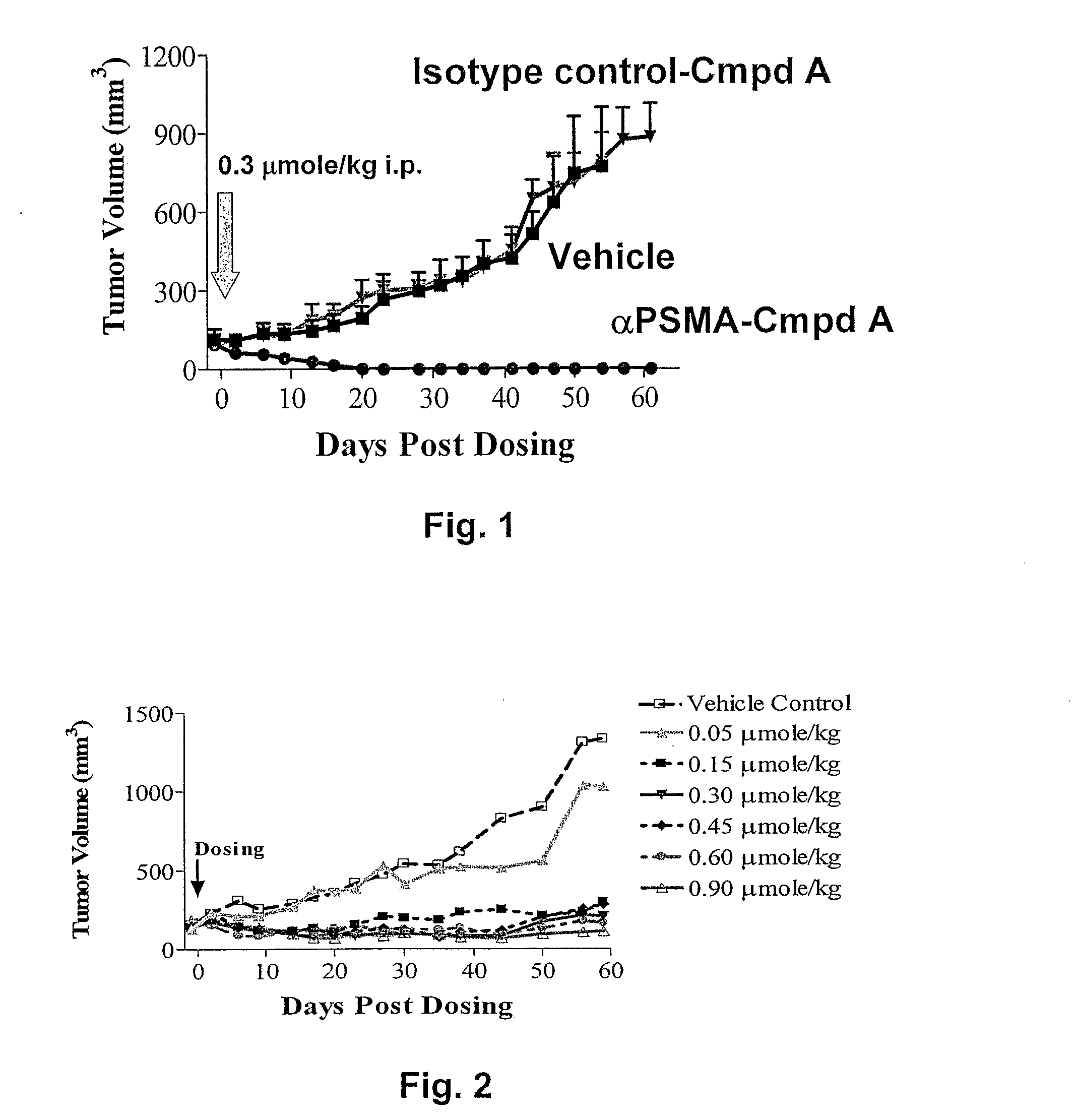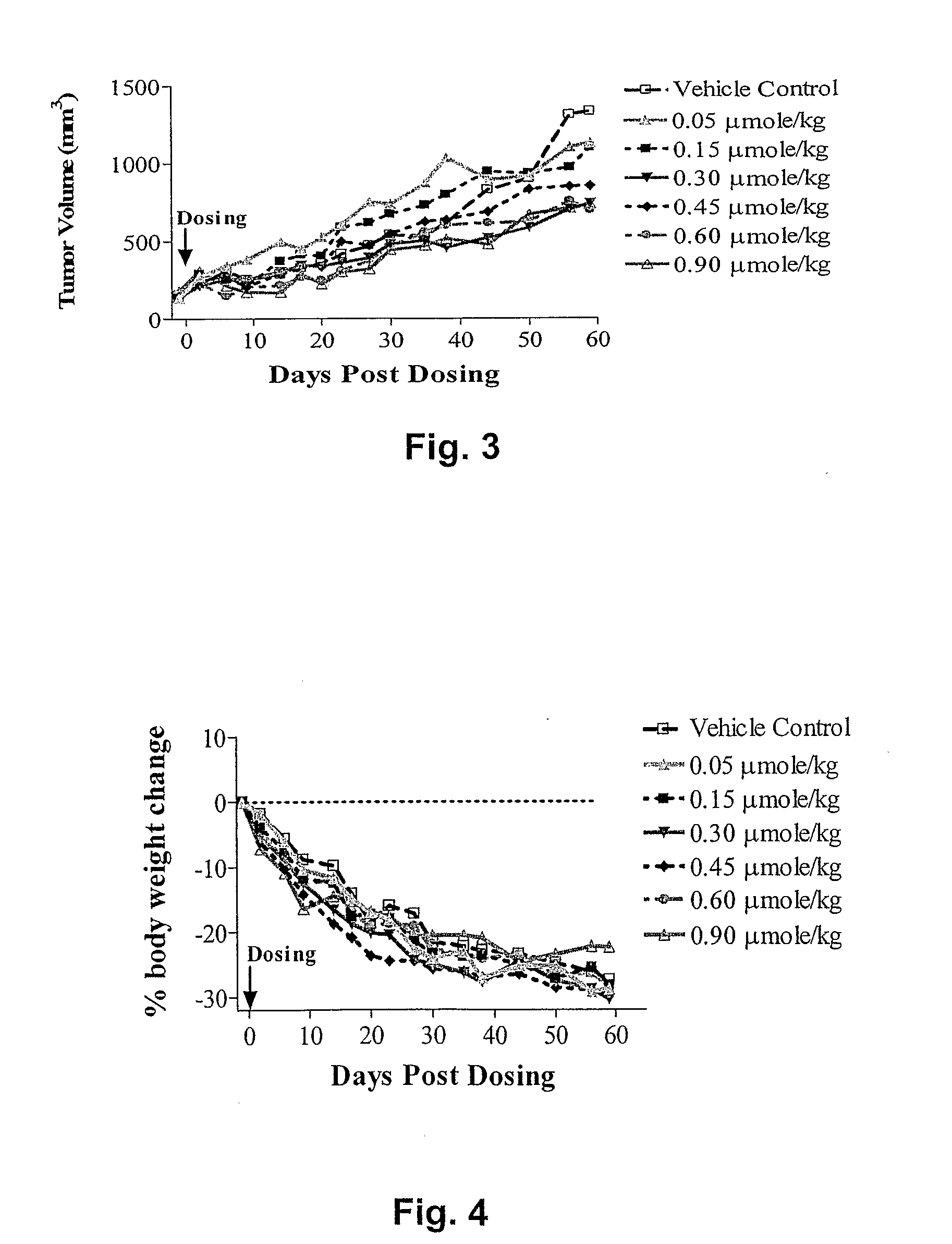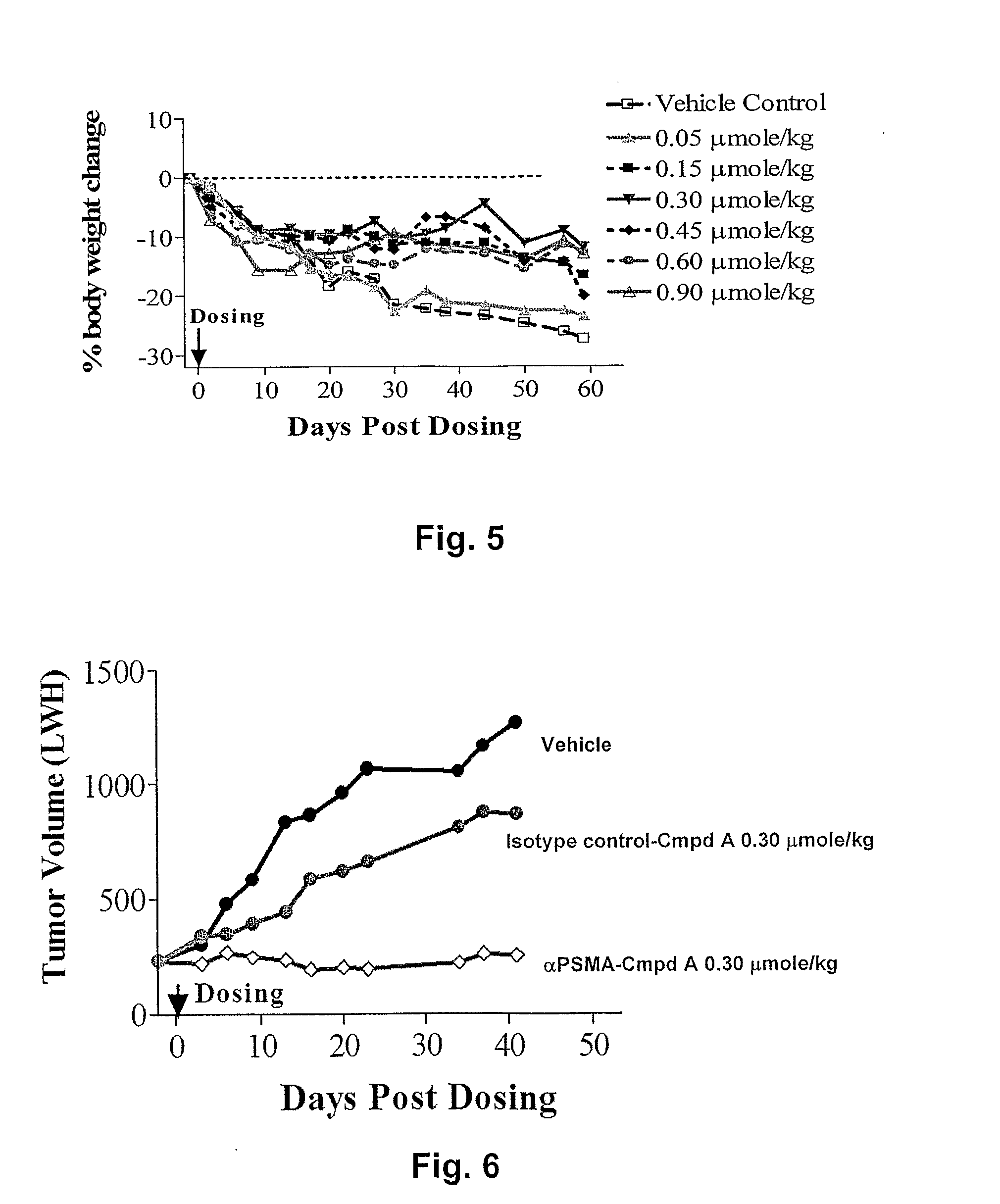Antibody-Drug Conjugates and Methods of Use
a technology of conjugates and antibody drugs, applied in the field of antibody drug conjugates, can solve the problems of limited application, less than optimal plasma stability, and often acute toxicity in vivo, and achieve the effect of maximum efficacy
- Summary
- Abstract
- Description
- Claims
- Application Information
AI Technical Summary
Benefits of technology
Problems solved by technology
Method used
Image
Examples
example 1
Synthesis of Peptide Linker Conjugates
1.1 a Synthesis Methodology
[0573]
1.1b Synthesis of Compound 1: N-[2′-(N′-tert-butoxycarbonyl-animo)-ethyl]-valine tert-butyl ester. To a solution of 2-(N-tert-butoxycarbonyl-amino)-ethyl bromide (1 g, 4.5 mmole) and valine tert-butyl ester (0.936 g, 4.5 mmole) in DMF (10 mL) was added potassium carbonate (1.85 g, 13.5 mmole). The mixture thus obtained was stirred at 100° C. overnight. The reaction mixture was concentrated and the residue was purified by flash chromatography on silica gel with ethyl acetate / hexanes (3 / 7) as eluent to give the title compound as an oil (0.16 g, 12%). 1H NMR (CDCl3) δ 0.94 (ft, 6H), 1.44 (s, 9H), 1.473 and 1.475 (2s, 9H), 1.88 (m, 1H), 2.51 (m, 1H), 2.78 (m, 2H), 3.11 (m, 1H), 3.22 (m, 1H), 3.39 and 4.13 (2bt, 1H), 5.00 (bs, 1H) ppm; LC-MS (ESI) 205 (M+H+-112), 261 (M+H+-Bu), 317 (M+H+).
1.1c Synthesis of Compound 2: N-(2-Aminoethyl)-valine. The compound 1 (137 mg, 0.43 mmole) was dissolved in a solution of TFA / dichl...
example 2
Synthesis of 6-Membered Hydrazine Linker Conjugates
2.1 Synthesis of a 6-Membered Gem-Dimethyl Hydrazine Linker Conjugated to a Duocarmycin Derivative Cytotoxin
2.1a Synthesis Scheme for Compound 109
[0578]
2.1b Synthesis of Compound 110
[0579]To a suspension of Cbz-dimethyl alanine (1 g, 3.98 mMoles) in 30 mL of DCM at ice-bath temperature was added HOAT (catalytic, 0.25 equivalents), DIPEA (2.8 mL, 16 mmoles) followed by 2-chloro-1,3-dimethylimidazolidinium hexafluorophosphate (CIP) (1.2 g, 4.4 mmoles). To this reaction mixture was then added Boc-NN(Me) (643 moles, 4.4 mmoles). The reaction mixture was allowed to stir overnight at room temperature. To the reaction mixture is added 10% citric acid solution (100 mL) and extracted with DCM. The organic phase was washed with water and then with a saturated solution of sodiumbicarbonate followed by water again. The organic phase was then concentrated and purified by silica gel column with increasing polarity of ethyl acetate in hexanes to g...
example 3
Synthesis of 5-Membered Hydrazine Linker Conjugates
3.1 Synthesis Methodology for Compound 4
[0593]
Cbz-DMDA-2,2-Dimethylmalonic Acid (1)
[0594]To a solution of 2,2-Dimethyl-malonic acid (2.0 gm, 0.0151 moles), Thionyl chloride (1.35 ml, 0.0182 moles) in THF (15 ml) in a 25 mL flask equipped with a stir bar, temperature probe, and reflux condenser was added a drop of DMF and the reaction mixture was heated to reflux for 2 hrs then cooled to room temperature. This reaction mixture was transferred to drop wise to a solution of Cbz-DMDA (4 gm, 0.0182 moles) and triethylamine (4 ml, 0.0287 moles) in THF (5 ml) at 0 C and was stirred for 30 min at this temperature. The solvent was removed in vacuo and the residue dissolved in 1N HCl (50 ml) and extracted with DCM (2×25 ml). The combined organic layers were extracted with 1N NaOH (2×25 ml) and the combined aqueous layer were acidified (pH4, filtered and concentrated in vacuo to an off-white sticky solid, 3.44 gm, 68% yield. Compound 1 was con...
PUM
| Property | Measurement | Unit |
|---|---|---|
| volume | aaaaa | aaaaa |
| volume | aaaaa | aaaaa |
| temperature | aaaaa | aaaaa |
Abstract
Description
Claims
Application Information
 Login to View More
Login to View More - R&D
- Intellectual Property
- Life Sciences
- Materials
- Tech Scout
- Unparalleled Data Quality
- Higher Quality Content
- 60% Fewer Hallucinations
Browse by: Latest US Patents, China's latest patents, Technical Efficacy Thesaurus, Application Domain, Technology Topic, Popular Technical Reports.
© 2025 PatSnap. All rights reserved.Legal|Privacy policy|Modern Slavery Act Transparency Statement|Sitemap|About US| Contact US: help@patsnap.com



